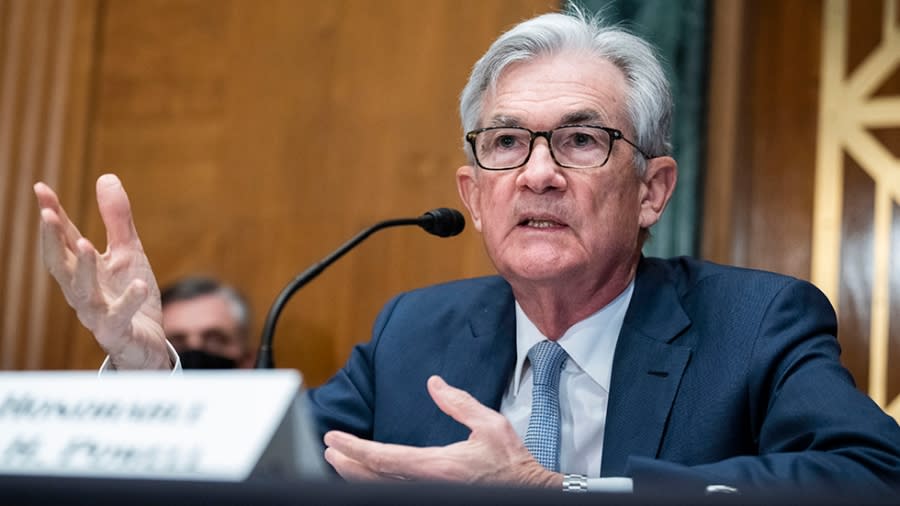Powell: Half-percent rate hike ‘on the table’ for May

- Oops!Something went wrong.Please try again later.
Federal Reserve Chair Jerome Powell said Thursday the central bank could raise interest rates by twice its typical pace at its May policy meeting as it seeks to curb high inflation.
Powell said Thursday there is broad support among Fed officials to raise the bank’s baseline interest rate range by 0.5 percentage points and expedite a planned series of rate hikes.
Annual inflation as measured by the Fed’s preferred gauge, the personal consumption expenditures (PCE) price index, hit 6.4 percent in February, more than three times the bank’s target of 2 percent.
“Economies don’t work without price stability. We need that to have a strong labor market for an extended period of time. We need it for financial stability, so we must do that,” Powell said at a panel of top international economic officials hosted by the International Monetary Fund.
The Fed has typically raised interest rates in 0.25 percentage point increments, but is facing growing pressure to hike quicker as inflation runs at four-decade highs.
The Fed’s primary tool for keeping prices stable and the labor market strong is adjusting the federal funds rate, its baseline interest rate range on overnight loans to banks. When the Fed raises or cuts the federal funds rate, it effects the interest rates for credit cards, auto loans, mortgages and other credit products.
The Fed is aiming to raise interest rates quickly enough to slow the economy into lower inflation without derailing a historically strong labor market.
Several members of the Federal Open Market Committee (FOMC), the Fed panel that sets interest rates, have expressed support for a 0.5 percentage point hike at the upcoming May 3-4 meeting in Washington, D.C. Financial markets also expect the Fed to hike by 0.5 percentage points over its next three meetings.
While Powell declined to reveal his own preference or give a specific forecast, he said “many” FOMC members backed raising rates at a quicker pace. He also said a faster pace of interest hikes could help make a bigger impact against high inflation compared to a slower, steadier ramp up in borrowing costs.
“There’s something in the idea of front-end-loading whatever accommodation one thinks is appropriate, so that does add points in the direction of 50 basis points being on the table,” Powell said. One basis point is one one-hundredth of a percentage point.
The Fed in March raised its baseline interest rate by 25 basis points to a range of 0.25 to 0.5 percent, the first hike since zeroing rates out in March 2020 amid the onset of the pandemic.
Fed officials in March projected they would raise rates by another 1.25 percentage points by the end of the year, but some have favored moving quicker than 0.25 percentage points per month.
The Fed had been hesitant to hike interest rates in 2021 as inflation steamed ahead, hoping that improving pandemic conditions and a growing workforce would ease supply and labor shortages behind rising prices.
But Powell and the Fed have acknowledged they can longer afford to be patient as the economy adjusts to life amid rippling waves of COVID-19 and the economic blowback from the war in Ukraine.
“It may be that the actual peak was in March, but we don’t know that and so we’re not going to count on it. And we’re also no longer going to count on help from supply side healing,” Powell said.
“If we get that, that’d be great, and I think that would be enormously helpful in having a soft landing, but we’re really going to be raising rates and getting expeditiously to levels that are more neutral.”
For the latest news, weather, sports, and streaming video, head to The Hill.

